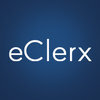Filter interviews by
La Net Team Software Solutions Technical Product Manager Interview Questions and Answers
La Net Team Software Solutions Technical Product Manager Interview Experiences
2 interviews found
I appeared for an interview in Apr 2025, where I was asked the following questions.
- Q1. How do you prioritize features when engineering materials are limited?
- Ans.
Prioritizing features with limited engineering resources requires strategic assessment of value, impact, and feasibility.
Value Assessment: Evaluate how each feature aligns with business goals. For example, prioritize features that enhance user retention.
User Feedback: Gather insights from users to identify which features they find most valuable. For instance, a survey can highlight top requests.
Cost-Benefit Analysis: A...
- Q2. Can you explain a technically complex product you've worked on and how you collaborated with the engineering team?
I appeared for an interview in Apr 2025, where I was asked the following questions.
- Q1. How do you translate complex technical requirements into real product features?
- Ans.
I break down technical requirements into user-friendly features through collaboration, prioritization, and iterative feedback.
Engage with stakeholders to understand their needs and pain points, ensuring alignment with technical capabilities.
Create user stories that translate technical jargon into relatable scenarios, e.g., 'As a user, I want to receive notifications for updates.'
Prioritize features based on user impact...
- Q2. How do you prioritize features when there are conflicting stakeholder demands?
- Ans.
I prioritize features by assessing stakeholder impact, aligning with business goals, and using data-driven decision-making.
Engage stakeholders to understand their needs and the rationale behind their requests.
Use a prioritization framework like MoSCoW (Must have, Should have, Could have, Won't have) to categorize features.
Evaluate the potential impact of each feature on key metrics, such as user engagement or revenue.
C...
Top trending discussions




Interview questions from similar companies

I applied via Approached by Company and was interviewed in Feb 2022. There were 2 interview rounds.

Interview Preparation Tips
- Java programming

I applied via Campus Placement and was interviewed in Sep 2021. There were 3 interview rounds.
(7 Questions)
- Q1. What are your salary expectations?
- Q2. What is your family background?
- Q3. Why should we hire you?
- Q4. What are your strengths and weaknesses?
- Q5. Tell me about yourself.
- Q6. Tell about ur village
- Q7. Tell about ur hobies
Interview Preparation Tips

I applied via Naukri.com and was interviewed in May 2021. There were 3 interview rounds.
Interview Questionnaire
3 Questions
- Q1. ADD two linkedlist (Leetcode Question)
- Ans.
Add two linked lists and return the sum as a linked list.
Traverse both linked lists and add the corresponding nodes.
Handle carry over while adding nodes.
Create a new linked list to store the sum and return it.
- Q2. Knowledge about different tech stacks
- Q3. Diff b/w quick sort and merge sort
- Ans.
Quick sort is faster but unstable, while merge sort is slower but stable.
Quick sort uses a pivot element to divide the array into two parts and recursively sorts them.
Merge sort divides the array into two halves, sorts them separately, and then merges them.
Quick sort has an average time complexity of O(n log n), while merge sort has a time complexity of O(n log n) in all cases.
Quick sort is not stable, meaning that the...
Interview Preparation Tips
Skills evaluated in this interview

I applied via Campus Placement and was interviewed in Jul 2021. There was 1 interview round.
Interview Questionnaire
2 Questions
- Q1. What is the polymorphism?
- Q2. What is inheritance?
Interview Preparation Tips

Interview Questionnaire
2 Questions
- Q1. According the qualifications
- Q2. According the resume details qualifications

I applied via Recruitment Consultant and was interviewed in Oct 2021. There were 3 interview rounds.
Interview Questionnaire
2 Questions
- Q1. What the qualification hcl
- Ans.
HCL is a global IT services company providing software engineering and consulting services.
HCL is a multinational company headquartered in India.
They offer a wide range of IT services including software development, testing, and maintenance.
HCL has a strong presence in various industries such as healthcare, finance, and manufacturing.
They have partnerships with leading technology companies like Microsoft, IBM, and Orac...
- Q2. How much salary
Interview Preparation Tips

I appeared for an interview before Jun 2016.
Interview Questionnaire
1 Question
- Q1. Java related questions on Oops concept and Multithreading
Interview Preparation Tips
Experience: Simple aptitude and reasoning questions little java based programming
Tips: Basic programming knowledge and good aptitude
Duration: 1 hour
Total Questions: 60
Round: Technical Interview
Experience: Normal questions on Java, basic programming questions like reverse no. , String related and logical coding
Tips: What u mentioned on your resume go through that only, they will not ask apart from your resume
Skills: How Well You Are Able To Communicate What You Wanted To Tell, Programming
College Name: SRCEM

I appeared for an interview before Aug 2016.
Interview Preparation Tips
Experience: I am vinothkumar from Dindugal, I was studied computer engineering in Madurai institute of engineering and technology at sivagangai, I am quality controller in RR DONNELLY at Chennai, my experience 2 years, my family staying in native, my father palanichami he is a former, my mother tamilselvi she is home maker and my one yelder brother Vijayakumar he is driver, I am interested area software engineer, my hobbies are listening music, reading book and news paper, playing and watching cricket
Tips: No comments
Round: Test
Experience: I am vinothkumar from Dindugal, I was studied computer engineering in Madurai institute of engineering and technology at sivagangai, I am quality controller in RR DONNELLY at Chennai, my experience 2 years, my family staying in native, my father palanichami he is a former, my mother tamilselvi she is home maker and my one yelder brother Vijayakumar he is driver, I am interested area software engineer, my hobbies are listening music, reading book and news paper, playing and watching cricket
Tips: No comments
Total Questions: 15
Round: Test
Experience: See my mentality
Tips: No comments
Duration: 45 minutes
Round: Group Discussion
Experience: Communication
Tips: No comments
Skills: Communication And Confidence
La Net Team Software Solutions Interview FAQs
Some of the top questions asked at the La Net Team Software Solutions Technical Product Manager interview -
Tell us how to improve this page.
La Net Team Software Solutions Interviews By Designations
- La Net Team Software Solutions Software Developer Interview Questions
- La Net Team Software Solutions Product Designer Interview Questions
- La Net Team Software Solutions Software Engineer Interview Questions
- La Net Team Software Solutions Technical Product Manager Interview Questions
- La Net Team Software Solutions Cloud Engineer Interview Questions
- La Net Team Software Solutions Security Engineer Interview Questions
- La Net Team Software Solutions Graphic Designer Interview Questions
- La Net Team Software Solutions Backend Developer Interview Questions
- Show more
Interview Questions for Popular Designations
- Product Manager Interview Questions
- Associate Product Manager Interview Questions
- Senior Product Manager Interview Questions
- Technical Manager Interview Questions
- Technical Project Manager Interview Questions
- Technical Program Manager Interview Questions
- Lead Product Manager Interview Questions
- Senior Product Owner Interview Questions
- Show more
Overall Interview Experience Rating
based on 2 interview experiences
Difficulty level
Duration
Interview Questions from Trending Companies on AmbitionBox
|
Software Developer
53
salaries
| ₹3 L/yr - ₹7.5 L/yr |
|
Full Stack Developer
13
salaries
| ₹3.6 L/yr - ₹8 L/yr |
|
Full Stack Software Developer
9
salaries
| ₹2.6 L/yr - ₹7.2 L/yr |
|
Software Engineer
8
salaries
| ₹2.4 L/yr - ₹7.2 L/yr |
|
Senior Software Developer
6
salaries
| ₹8.1 L/yr - ₹14.5 L/yr |
- Home >
- Interviews >
- La Net Team Software Solutions Interview Questions


















